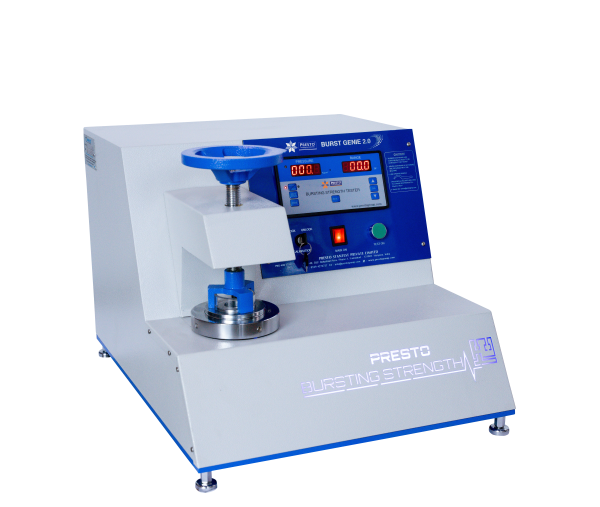Thermal process development is a critical aspect of various industries, particularly in food production, pharmaceuticals, and materials engineering. It involves the careful design and optimization of heat treatment processes to ensure product safety, quality, and efficiency. This blog looks into the intricacies of thermal process, exploring its significance, methodologies, applications, and future trends.
It refers to the design and optimization of processes that involve the application of heat. These processes are essential for a wide range of applications, including sterilization, pasteurization, drying, and cooking in the food industry, as well as in the production of pharmaceuticals and advanced materials.
The primary goal is to achieve the desired product characteristics while ensuring safety and efficiency. This involves understanding the thermal properties of the product, the kinetics of microbial inactivation, and the effects of heat on product quality.
The Importance
- Ensuring Safety: In the food and pharmaceutical industries, thermal processing is crucial for eliminating harmful microorganisms and pathogens. Properly developed thermal processes ensure that products are safe for consumption and use.
- Optimizing Quality: Thermal processes can significantly affect the sensory and nutritional qualities of food products. In materials engineering, heat treatment impacts the mechanical properties of materials. Thus, optimizing these processes is essential for maintaining product quality.
- Improving Efficiency: Efficient thermal processes reduce energy consumption and processing time, leading to cost savings and increased productivity.
- Regulatory Compliance: Industries such as food and pharmaceuticals are heavily regulated. Proper thermal process development ensures compliance with safety standards and regulations.
Key Components
- Thermal Properties of Materials: Understanding the thermal properties, such as specific heat, thermal conductivity, and thermal diffusivity, is fundamental. These properties determine how heat is transferred and distributed within the product during processing.
- Microbial Inactivation Kinetics: For food and pharmaceuticals, understanding the kinetics of microbial inactivation is critical. This involves determining the D-value (time required to reduce the microbial population by one log cycle) and the Z-value (temperature change needed to achieve a tenfold reduction in the D-value).
- Heat Transfer Mechanisms: Heat transfer mechanisms, including conduction, convection, and radiation, play a crucial role in thermal process development. Understanding these mechanisms helps in designing efficient heating systems.
- Process Validation and Monitoring: Process validation involves conducting experiments to confirm that the thermal process consistently produces the desired outcomes. Monitoring systems, such as temperature sensors and data loggers, are essential for ensuring process control and repeatability.
Methodologies Involved
- Experimental Studies: Conducting laboratory experiments is a fundamental approach to thermal process development. Small-scale trials help in understanding the behavior of the product under different thermal conditions.
- Mathematical Modeling: Mathematical models, such as heat and mass transfer equations, are used to simulate thermal processes. These models help predict the outcomes of different process parameters and optimize the design.
- Computational Fluid Dynamics (CFD): CFD is a powerful tool for simulating complex heat transfer processes. It provides detailed insights into the temperature distribution and fluid flow patterns within the product and processing equipment.
- Pilot-Scale Trials: Scaling up from laboratory experiments to pilot-scale trials helps validate the findings and refine the process parameters before full-scale production.
- Statistical Process Control (SPC): SPC techniques are used to monitor and control the thermal process during production. This involves collecting data on critical process parameters and using statistical methods to detect and correct variations.
Applicable Industries
- Food Industry:
- Pasteurization: It ensures effective pasteurization, destroying pathogens while maintaining the sensory and nutritional qualities of food.
- Sterilization: In canning and aseptic processing, thermal treatments ensure long shelf life by eliminating microorganisms.
- Drying: Optimizing drying processes reduces moisture content, extending shelf life and enhancing product stability.
- Pasteurization: It ensures effective pasteurization, destroying pathogens while maintaining the sensory and nutritional qualities of food.
- Pharmaceutical Industry:
- Sterilization: The process is crucial for sterilizing pharmaceutical products and equipment, ensuring they are free from harmful microorganisms.
- Drug Formulation: Heat treatment can affect the stability and efficacy of drugs. Optimizing thermal processes ensures the desired therapeutic outcomes.
- Sterilization: The process is crucial for sterilizing pharmaceutical products and equipment, ensuring they are free from harmful microorganisms.
- Materials Engineering:
- Heat Treatment of Metals: Processes such as annealing, quenching, and tempering are optimized to achieve the desired mechanical properties in metals.
- Ceramics and Polymers: Thermal processes are used to improve the structural integrity and performance of ceramic and polymer materials.
Future Trends in Thermal Process Development
- Advanced Modeling and Simulation: The use of advanced modeling techniques, such as artificial intelligence and machine learning, is expected to enhance the accuracy and efficiency of thermal process development.
- Innovative Heating Technologies: Emerging technologies, such as microwave and radiofrequency heating, offer faster and more uniform heating, reducing processing time and energy consumption.
- Integration of IoT and Industry 4.0: The integration of Internet of Things (IoT) devices and Industry 4.0 principles in thermal process development allows real-time monitoring and control, improving process reliability and efficiency.
- Sustainable Practices: Emphasis on sustainability is driving the development of energy-efficient thermal processes and the use of renewable energy sources.
Ensures Quality and Better Efficiency
Thermal process development is a vital aspect of various industries, ensuring product safety, quality, and efficiency. By understanding the thermal properties of materials, microbial inactivation kinetics, and heat transfer mechanisms, industries can design and optimize thermal processes to meet their specific needs.
Despite the challenges, advancements in modeling, innovative heating technologies, and the integration of IoT are paving the way for more efficient and sustainable thermal processes. As we continue to explore and innovate, it will remain a cornerstone of industrial success and consumer safety.



